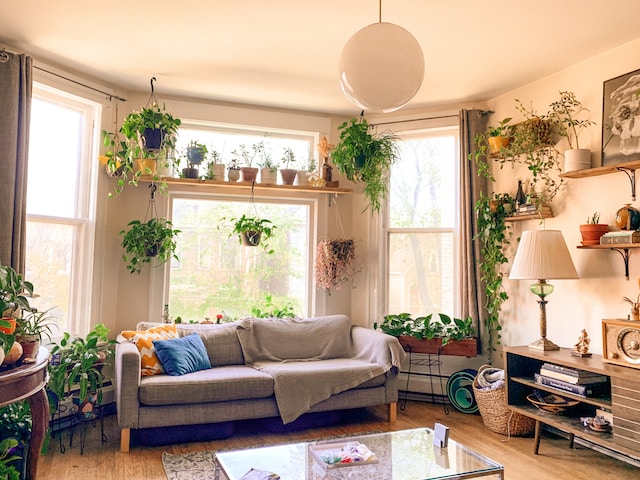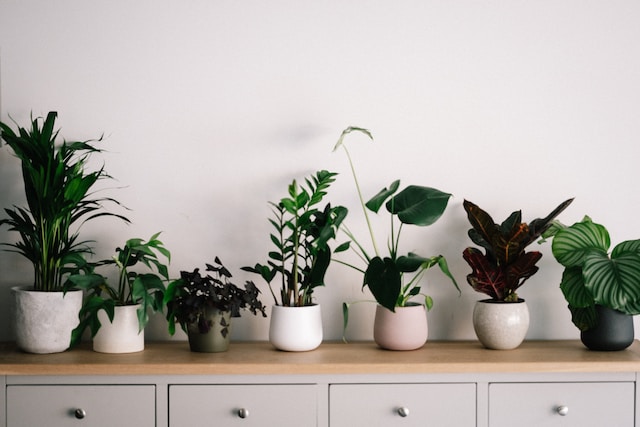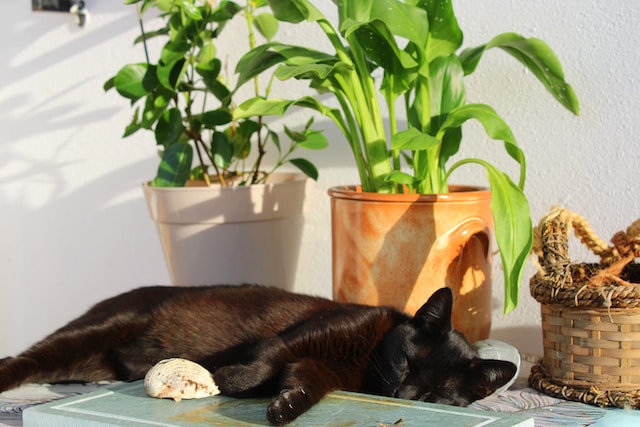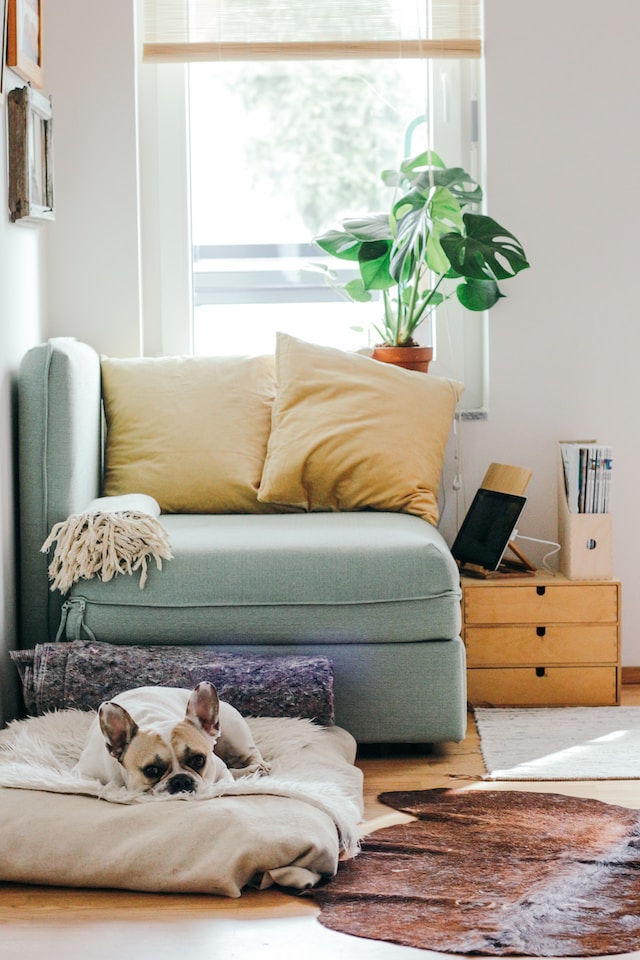
Indoor plants have become a popular trend in recent years, not only as a way to add greenery to spaces, but also as a natural way to improve air quality. Plants have been proven to filter out harmful toxins in the air, releasing fresh oxygen and creating a healthier living environment.
Understanding indoor air quality
Indoor air quality (IAQ) is a measure of the cleanliness and purity of the air indoors. Poor IAQ is caused by a variety of factors, such as pollutants from outdoor air seeping into the building, chemicals emitted from household products, mold, and poor ventilation systems – all of which can have a negative impact on human health.
Common indoor air pollutants
Common indoor air pollutants include volatile organic compounds (VOCs), carbon monoxide, nitrogen dioxide, and fine particulate matter. VOCs are emitted from many household items, such as cleaning supplies, paint, and furniture. Exposure to VOCs can cause irritation to the eyes, nose, throat, and skin, and can even lead to more serious health problems such as respiratory issues, kidney damage, and cancer.
Exposure to poor IAQ has been linked to a variety of health problems, including headaches, dizziness, fatigue, infections, allergies, and asthma. Long-term exposure to poor IAQ can also lead to more serious health issues such as heart disease and lung cancer.
Role of plants in improving air quality
Indoor plants can play an important role in improving IAQ. By photosynthesizing, or taking in carbon dioxide and releasing oxygen, plants help to improve oxygen levels. Through transpiration, plants release moisture into the air, helping to humidify dry spaces. Additionally, some plants have been shown to absorb and break down harmful pollutants in the air, improving IAQ.
It’s important to note that while indoor plants do have the potential to improve IAQ, they should not be relied upon as the sole solution. Proper ventilation, regular cleaning, and the use of low VOC products are also important factors in maintaining healthy IAQ. By incorporating these practices along with indoor plants, anyone can improve the air quality and overall well-being of their living space.

List of indoor plants to consider
- Spider Plant – removes formaldehyde and benzene from the air, and produces oxygen.
- Snake Plant – filters out toxins such as benzene, formaldehyde, trichloroethylene, xylene, and toluene.
- Peace Lily – removes mold spores and other toxins in the air, reducing the chances of developing respiratory diseases.
- Boston Fern – removes formaldehyde, which is commonly found in household items and furniture.
- Aloe Vera – removes benzene and formaldehyde, while also producing oxygen and improving air quality.
- Golden Pothos – removes carbon monoxide and formaldehyde from the air, and is easy to care for.
- Bamboo Palm – removes pollutants such as formaldehyde, benzene and trichloroethylene.
- Areca Palm – removes toxins such as formaldehyde and benzene from the air, while adding moisture and freshness to the atmosphere.
- Rubber Plant – removes formaldehyde, carbon monoxide and other toxins from the air, while also adding humidity and beauty to the room.
- Dracaena – comes in different varieties, each of which can filter out different indoor pollutants such as formaldehyde, trichloroethylene, benzene, and xylene.
Adding these indoor plants to your living space can not only add a touch of greenery but can also improve the overall air quality and make it a healthier environment to live in.
Factors to consider when choosing indoor plants
When it comes to selecting indoor plants, there are several factors to consider to ensure their successful growth and integration into your space. By taking into account lighting requirements, watering needs, space availability, and pet-friendly options, you can create a green oasis that thrives while complementing your lifestyle.
Lighting requirements
Different plants have varying lighting preferences, ranging from low to bright indirect light. Consider the available natural light in your space and match it with the plant’s requirements. Some plants, like snake plants and ZZ plants, can tolerate lower light conditions, making them suitable for areas with limited sunlight. On the other hand, plants like succulents and cacti thrive in bright, direct light and are ideal for sunlit windowsills.
Pet-friendly options

If you have pets, it’s essential to choose plants that are non-toxic and safe for them to be around. Some common pet-friendly options include spider plants, Boston ferns, and areca palms. However, it’s always recommended to double-check the toxicity of plants before bringing them into a pet-inhabited space. Certain plants, such as lilies, aloe vera, and certain types of ivy, can be toxic to pets if ingested. Consult a reliable source or consult with a veterinarian to ensure the safety of your furry friends.
Watering needs
Understanding the watering needs of indoor plants is crucial to avoid overwatering or underwatering. Some plants, like ferns and peace lilies, prefer consistently moist soil, while others, such as succulents and cacti, thrive in drier conditions and require infrequent watering. Consider your schedule and ability to maintain a watering routine when selecting plants, ensuring they align with your lifestyle and time availability.
Space availability
Assess the available space in your home or office to determine the appropriate size and growth habit of the plants you choose. If you have limited floor space, consider plants that can be placed on shelves or hung from the ceiling, such as trailing pothos or spider plants. For larger areas, tall and bushy plants like fiddle-leaf figs or palms can serve as eye-catching focal points. Also, consider the vertical space and explore options for wall-mounted planters or hanging baskets to maximize your greenery.
Caring for indoor plants
To ensure the health and vitality of your indoor plants, proper care and maintenance are essential. This includes understanding and implementing proper watering techniques, providing appropriate fertilization and soil considerations, practicing pruning and grooming, and addressing common pests and diseases that may affect your plants.
Proper watering techniques
Each plant has specific watering requirements. Some prefer consistently moist soil, while others prefer drier conditions. Research the watering needs of your plants and adjust accordingly. Before watering, check the moisture level of the soil by inserting your finger about an inch deep. If the soil feels dry, it’s time to water. When watering, ensure that the water reaches the root zone. Water until it drains out from the bottom of the pot, ensuring proper hydration and preventing waterlogged soil.
Fertilization and soil considerations
Indoor plants generally require less fertilization compared to outdoor plants. Use a balanced fertilizer or one specifically formulated for indoor plants. Follow the instructions for application rates and frequency. Select a well-draining potting mix specifically formulated for indoor plants. Avoid using garden soil, as it can be too heavy and lead to waterlogging. Consider adding organic matter or perlite to improve drainage.

Pruning and grooming tips
Regularly inspect your plants and remove any dead or yellowing leaves. This helps maintain plant health and aesthetics. If your plant becomes leggy or develops long stems, you can prune it back to promote bushier growth and maintain a more compact shape. Pinch off the tips of certain plants to encourage branching and a fuller appearance. You can also shape plants by selectively pruning or trimming certain branches.
Dealing with common pests and diseases
Regularly inspect your plants for signs of pests such as aphids, mealybugs, or spider mites. Look for visible insects, webbing, or unusual damage on leaves. For minor infestations, you can try using natural remedies like neem oil, insecticidal soaps, or wiping the leaves with a mixture of water and mild soap. If a plant shows signs of disease or severe pest infestation, isolate it from other plants to prevent spreading. Treat the affected plant using appropriate measures like fungicides or specific insecticides.
Remember to research the specific needs of each plant species and provide them with the appropriate care, creating a lush and vibrant indoor garden. Regular monitoring and proactive pest control measures will help ensure the long-term health and beauty of your plants.
Enhancing aesthetics with indoor plants
Indoor plants not only provide numerous health benefits but also have the power to transform the aesthetics of any space. They’re particularly ideal for tiny spaces as they can significantly enhance the ambiance in minimalist interiors. By incorporating plants into your interior design, carefully choosing planters and containers, and employing effective plant arrangement and styling techniques, you can create a visually appealing and harmonious environment.

Incorporating plants into interior design
Identify focal points: Determine areas within your space that could benefit from a focal point, such as a large plant or a group of plants. These focal points can draw attention and add visual interest to specific areas.
Balance and symmetry: Use plants to create balance and symmetry in your space. Place plants on both sides of a shelf, mantel, or windowsill to create a sense of harmony.
Vertical elements: Incorporate tall plants or trailing vines to add verticality and create visual layers within your space. This can be achieved by placing tall plants near walls or using hanging planters.
Choosing planters and containers
Select planters that complement the overall style of your space. Choose from a variety of materials such as ceramic, terracotta, metal, or woven baskets to match your interior design theme. Ensure that the size of the planter is proportionate to the size of the plant. A too-small or too-large planter can disrupt the visual balance. The planter should provide adequate space for the plant’s root system to grow.
Make sure too that the planters have proper drainage holes to prevent waterlogging. If using decorative pots without drainage, consider placing the plant in a plastic liner or using a saucer underneath to catch excess water.
Plant arrangement and styling tips
Create visually appealing arrangements by grouping plants with similar care requirements. Combining plants with different heights, textures, and leaf colors can add depth and interest to the display. Place trailing plants on shelves or in hanging planters to add a cascading effect. This creates a dynamic and visually captivating arrangement.
Mix plants of different sizes to create a sense of scale and variation. Pair larger plants with smaller ones to create a balanced composition. Experiment with different arrangements, heights, and combinations to find what works best for your space. Consider the overall color scheme and use plants with foliage that complements or contrasts with the existing colors in your interior design.
By incorporating indoor plants thoughtfully, selecting appropriate planters, and arranging plants strategically, you can enhance the aesthetics of your space. The lush greenery and natural beauty of indoor plants will add a refreshing and captivating element to your home or office, creating a visually pleasing and harmonious environment.
All in all, indoor plants are a great investment for improving the air quality and aesthetics of any living space. By choosing the right plants and maintaining consistent care, anyone can have a green thumb and a healthier, happier home.
